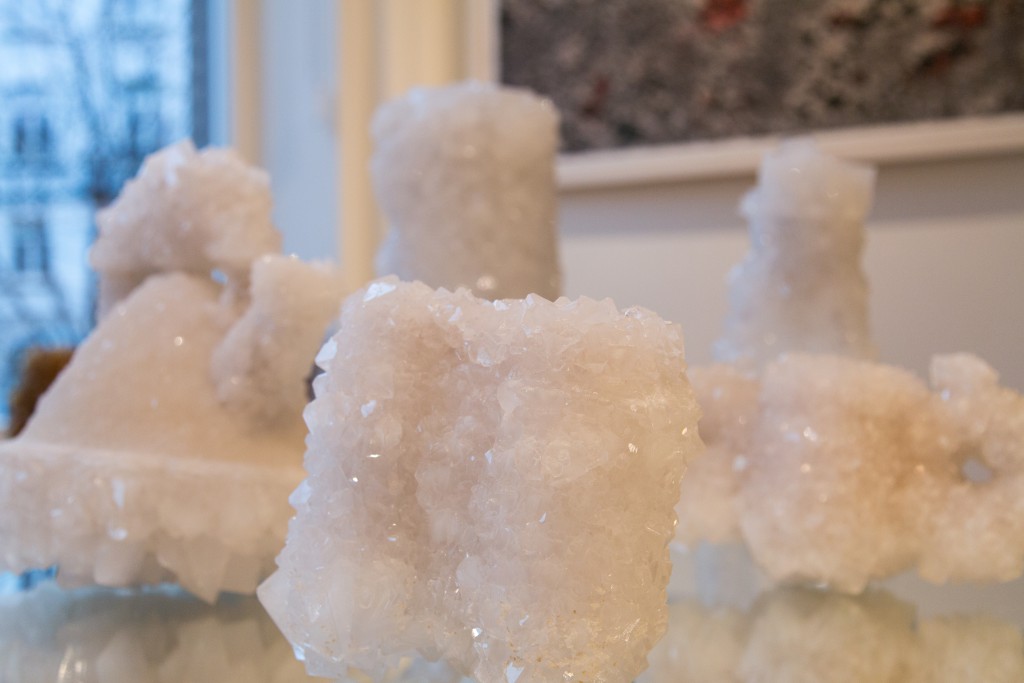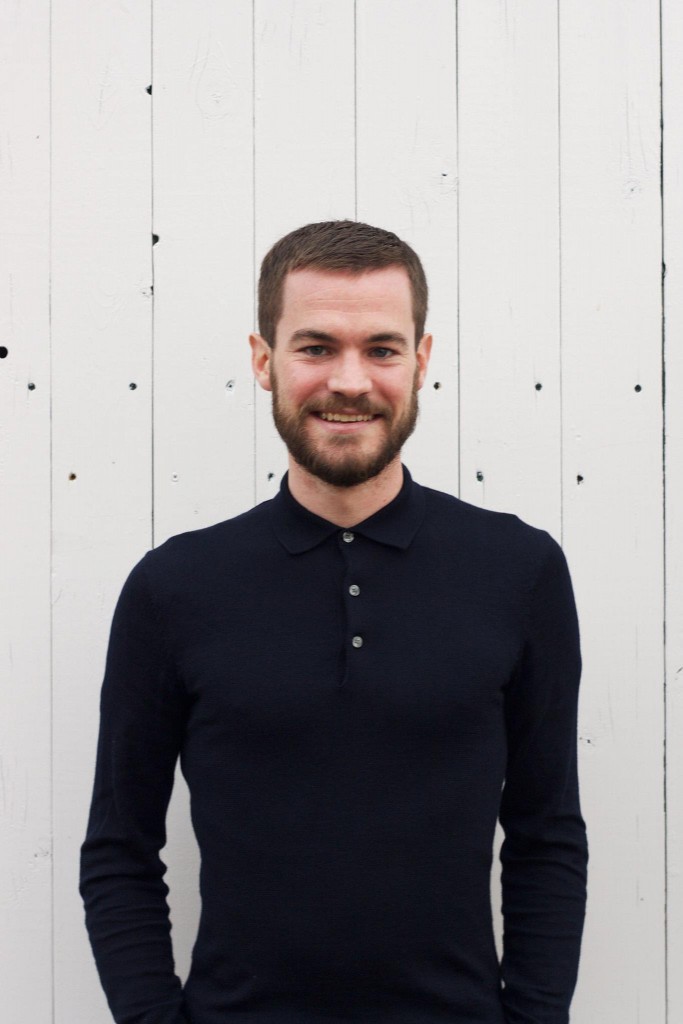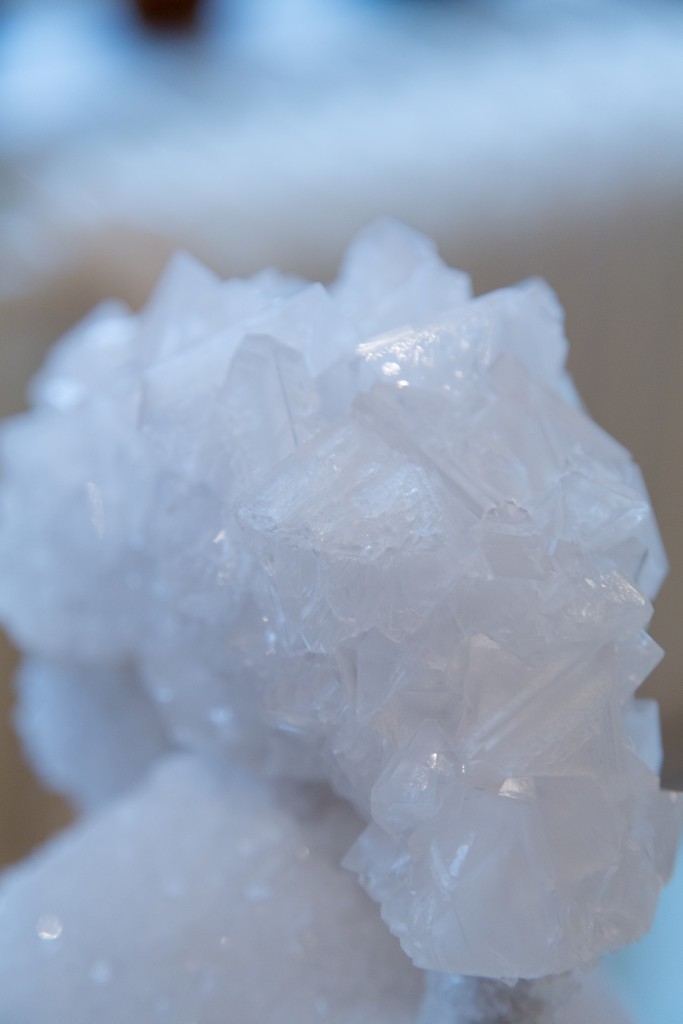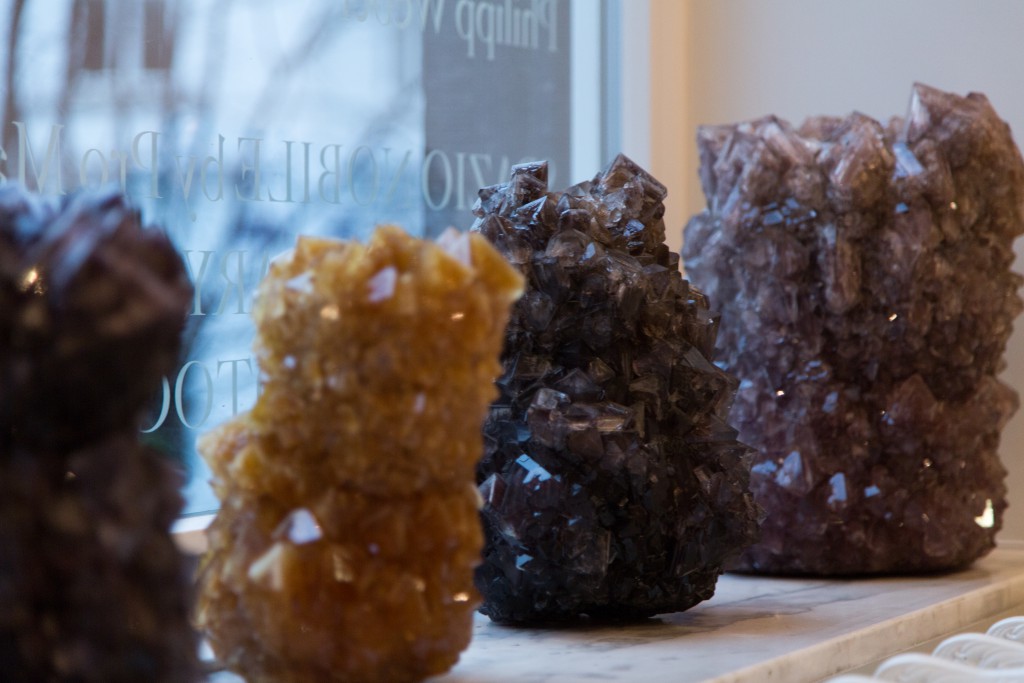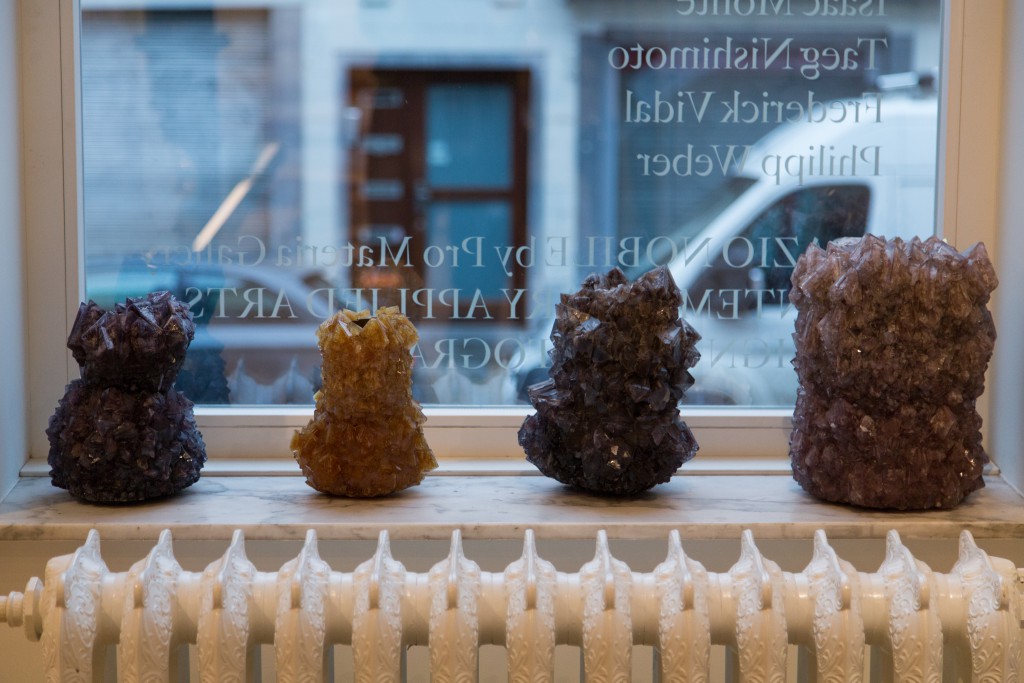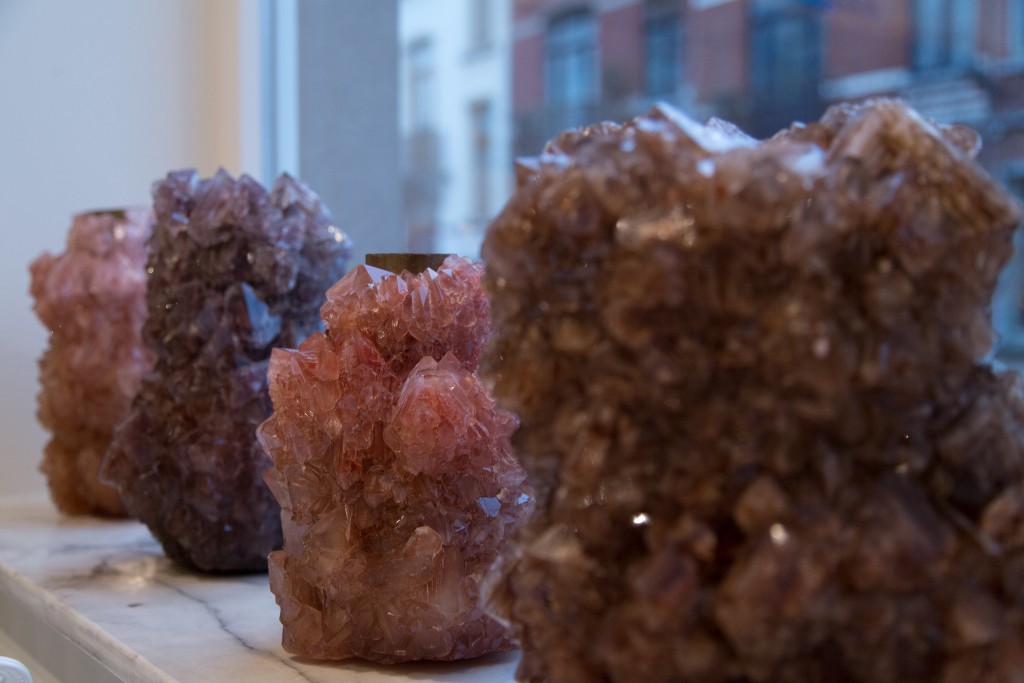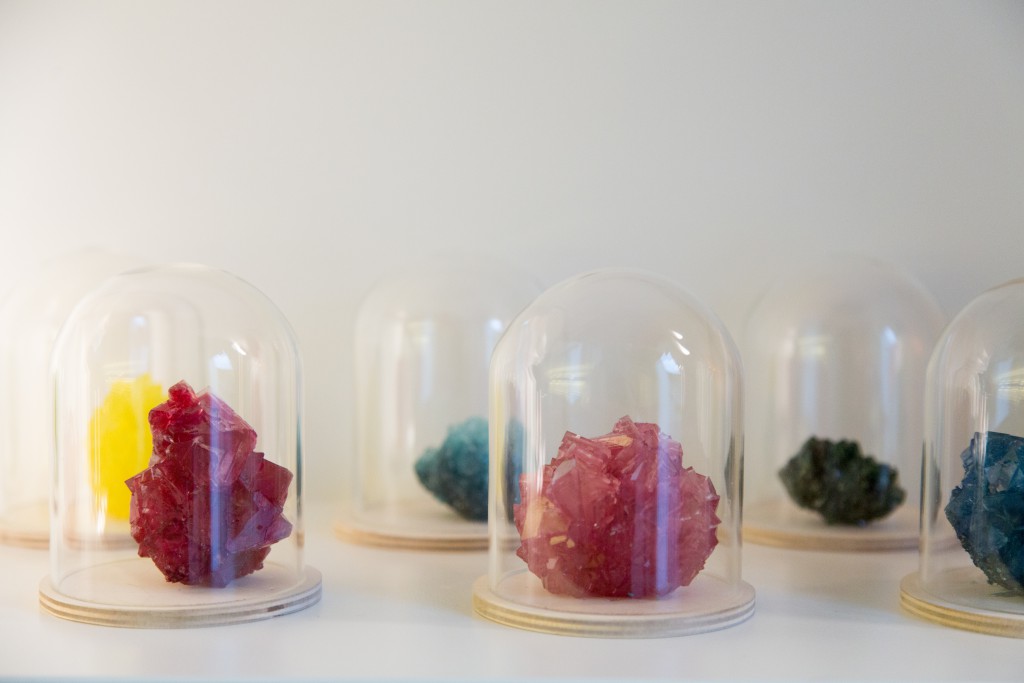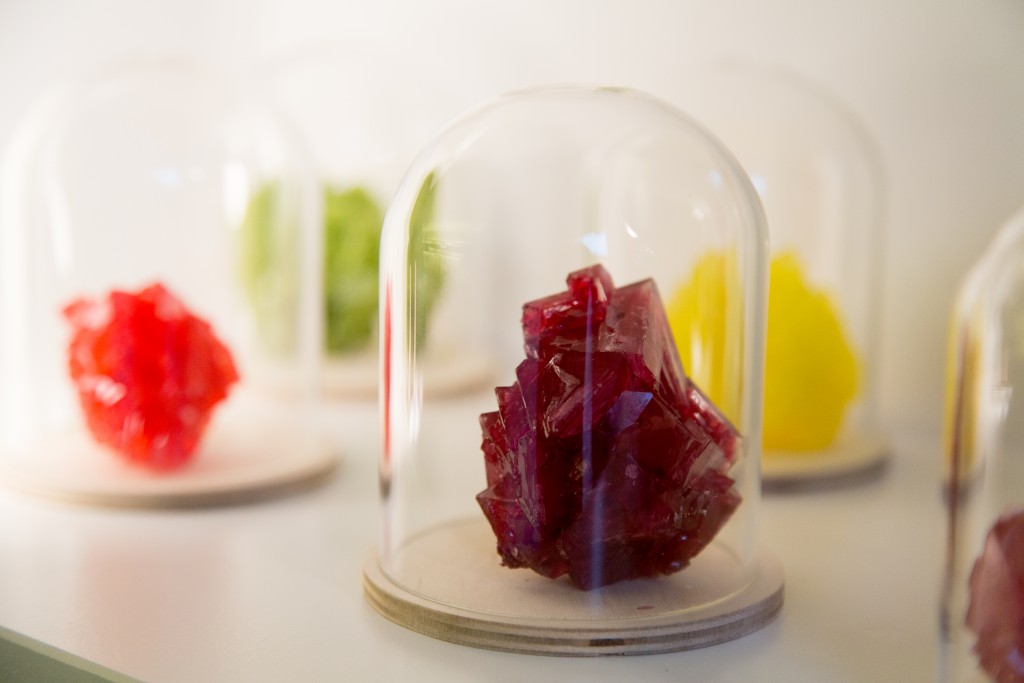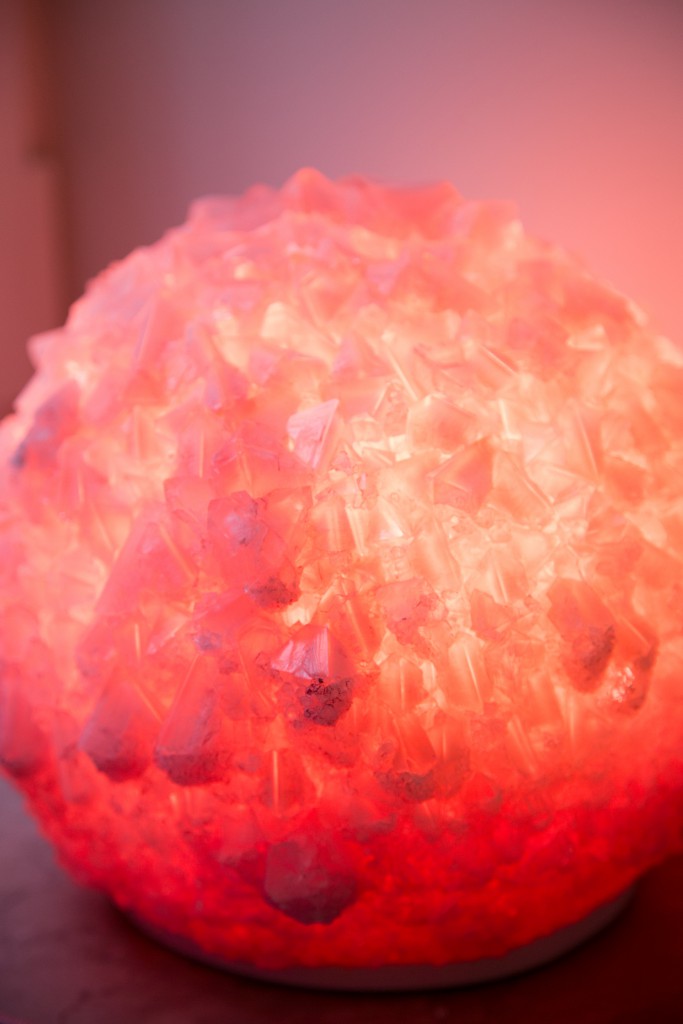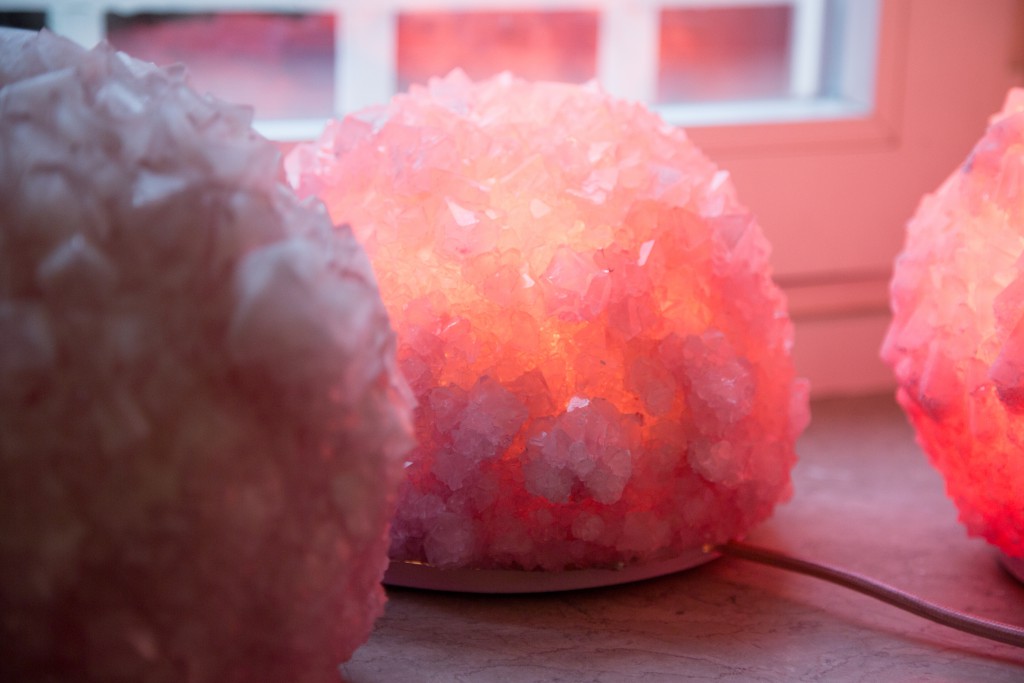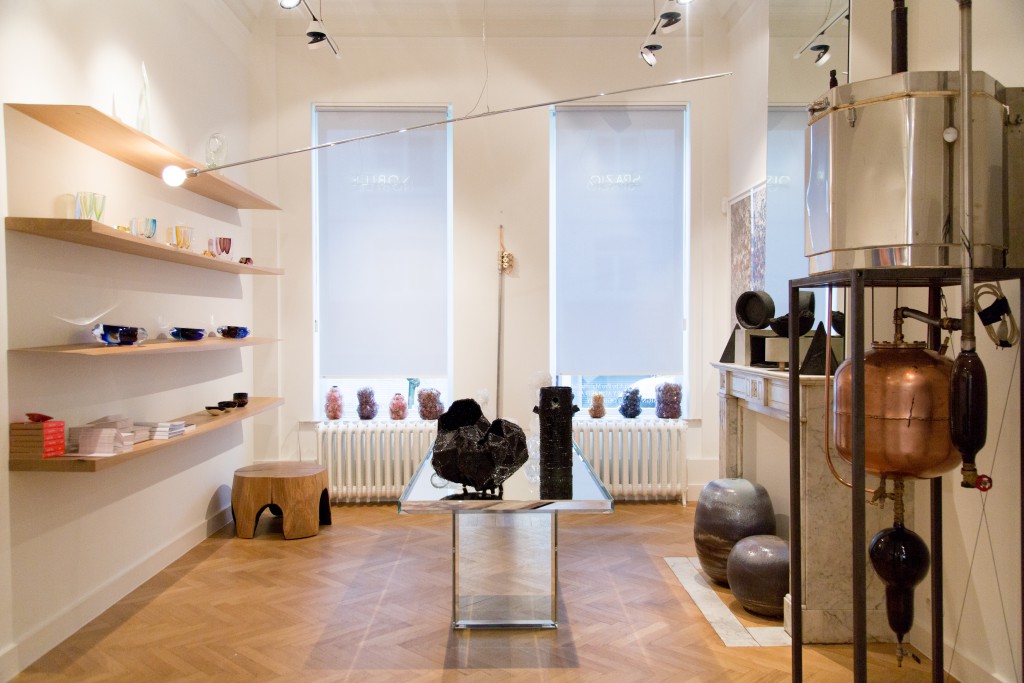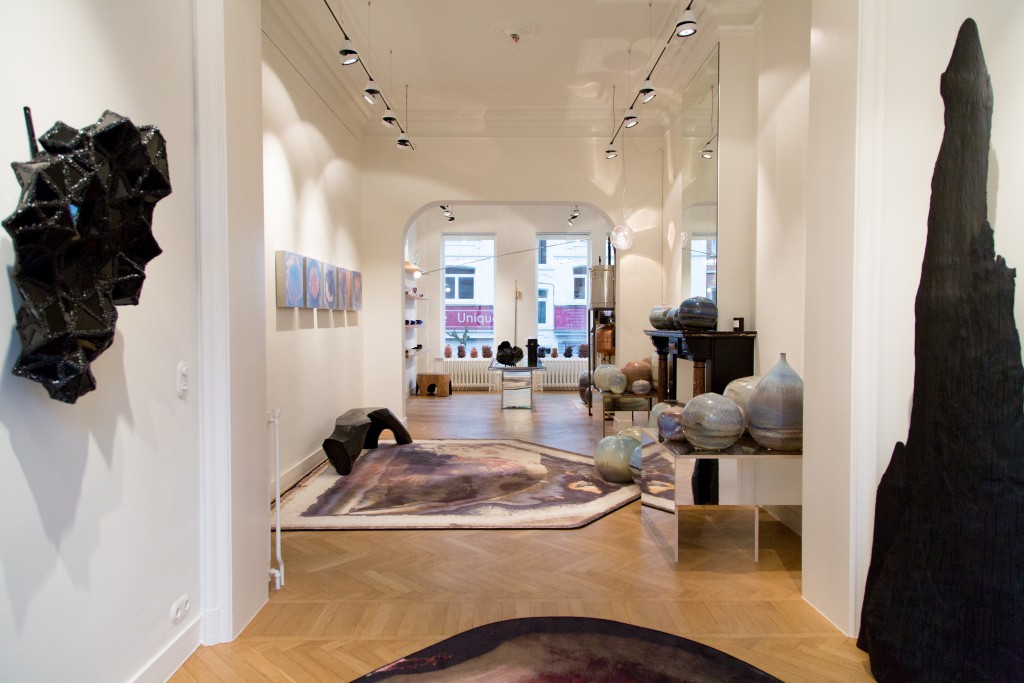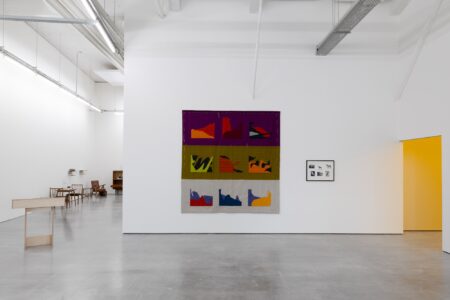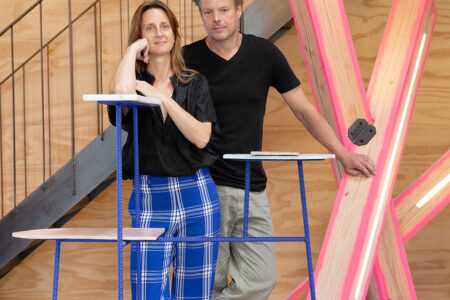Isaac Monte on Crystallized
Designer Isaac Monte tells TLmag about the years of research that went into his work on display in Crystallized, at Spazio Nobile in Brussels until April 15.
Manipulating materials and our perceptions of them is designer Isaac Monte’s driving interest. What constitutes our surroundings, from biological and geological to waste and food materials, is recontextualised to challenge us to reconsider our value system. Graduating from Willem de Kooning Academy in 2013, the Belgian designer decided to stay in Rotterdam where he has won numerous awards. The result of years of research, in 2016 he unveiled a series of vases made of crystals. Taking this methodology and concept further on the occasion of the Crystallized exhibition, at Spazio Nobile until April 15, he developed the Five Icons of Design project. Monte spoke to TLmag about his enduring fascination with materials and crystals.
TLmag: How has your practice and philosophy developed since you graduated in 2013?
Isaac Monte: For a very long time, I have had a fascination with materials and how to manipulate materials. It is my aim to control materials and to change the way they look and behave. When I just graduated, I was mostly focusing on waste materials or at least what other people call waste materials. To me, they were just a raw material that I could use to create new work. For my graduation project, I worked with used cigarette filters. I shredded, melted and pressed them to make birdhouses. To me those filters were more than trash, they were the base material of my project and the final outcome functioned as a conversation piece. I aimed to change the littering behaviour of smokers. Later I also worked with fur from roadkill, which I collected, skinned and tanned myself. This technique is sometimes called above-ground mining. Where you mine or collect your raw materials from your environment.
Gradually I moved towards more science and bio-based materials, but still with the focus on manipulation. I made a project where I transformed pig organs, more specifically pig hearts, in collaboration with a university professor. I have actually always had a fascination with biology and science, but I was never attracted to study science and to apply it in a scientific or conventional way. Now I am gathering information by collaborating with scientists and I challenge them to think outside of the scientific box. I use scientific protocols to change and manipulate materials. Also for the crystal project, I collaborated with BioArt Laboratories in Eindhoven – a foundation that helps bio artists to develop their projects, not only with space or materials but mostly by sharing their scientific network and expertise.
When and why did you start working with crystals?
Ever since I was a child, I have had a fascination with stalagmites and stalactites. In my grandmother’s basement, there were small stalactites due to groundwater dripping from the ceiling. I would watch the dripping for hours and wonder if the tip at the ceiling would ever reach the bottom. In 2013 I started experimenting with growing my own stalagmites in my studio. I tried a variety of minerals and mineral combinations to create objects. Later I applied several techniques to stimulate and activate the process of dripping. The first small object literally grew in my studio. But it was still very difficult to influence the growing process and after a period of time they would crumble and fall apart. It took me two years of extensive testing to combine the perfect technique with the perfect mix of minerals. Finally, I also wanted to manipulate the colour of the crystals, which took me another year of research.
For Crystallized, you developed the brand new Five Icons of Design. Please tell us about the creative, conceptual and production process?
Previously I created a series of vases and lighting objects from crystals. These were the first functional outcome of my research. During this research, I also came across the precious stone amber. These stones are formed in nature when resin or wax from trees are put under high pressure, mostly by coincidence. Because this material is first liquid it happens that leaves, insects or small animals are caught in the stone. These fossils are of high importance for research into human history and evolution. Taking this as a starting point, I wanted to create my own precious stone to capture important design icons for a future generation.
For the production process of the crystal objects, I dissolve minerals in warm water and during the cooling process, these minerals crystallize. This can be done around a mould, in this case, a real design object. At the moment, I am working with big metal tanks to dissolve the minerals in water. Then the objects are suspended in that tank in order to crystallize them. The size of the tank I am currently using has limited me in choosing the objects. The objects were chosen because of their significance in design history, but also because of their size.
How will you take the Five Icons of Design project forward?
The white edition on show at Spazio Nobile is one of an edition of three. The second edition in the colour red will be shown during the Venice Art Biennale at Pallazo Michiel from May to November. The third edition in blue will be exhibited during Wanted Design in Manhattan, at the end of May.
Additionally, my aim is to create a second edition of crystallized icons, but this time with a series of iconic chairs. For this, I am currently building a big tank of 1x1x1m to be able to dip bigger objects.
Season IV – Crystallized at Spazio Nobile, Brussels (BE), 23.2.2017-15.4.2017, www.spazionobile.com
